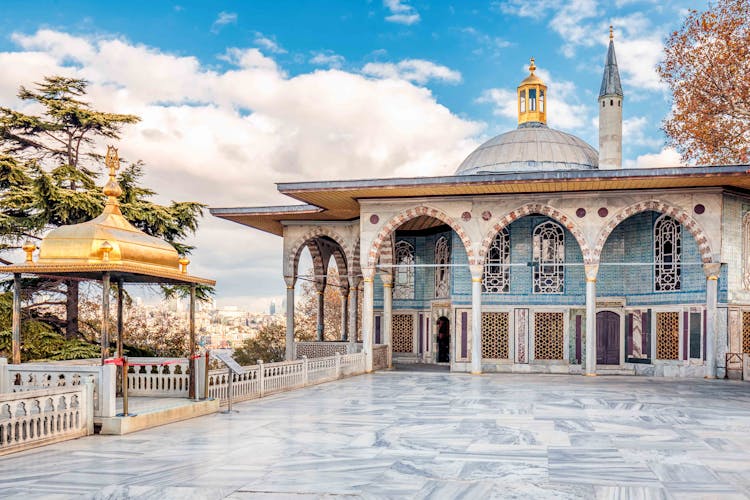Ottoman sultans once ruled an empire that stretched across three continents! When you visit Topkapı Palace in Istanbul, you're walking through the very halls where world-changing decisions were made for nearly 400 years. Perched above the Bosphorus Strait, this UNESCO World Heritage Site isn't just a stunning architectural masterpiece—it's a time capsule of Ottoman power, intrigue, and opulence.
The palace served as the primary residence and administrative headquarters for Ottoman sultans from 1478 to 1856, before they moved to the more modern Dolmabahçe Palace.
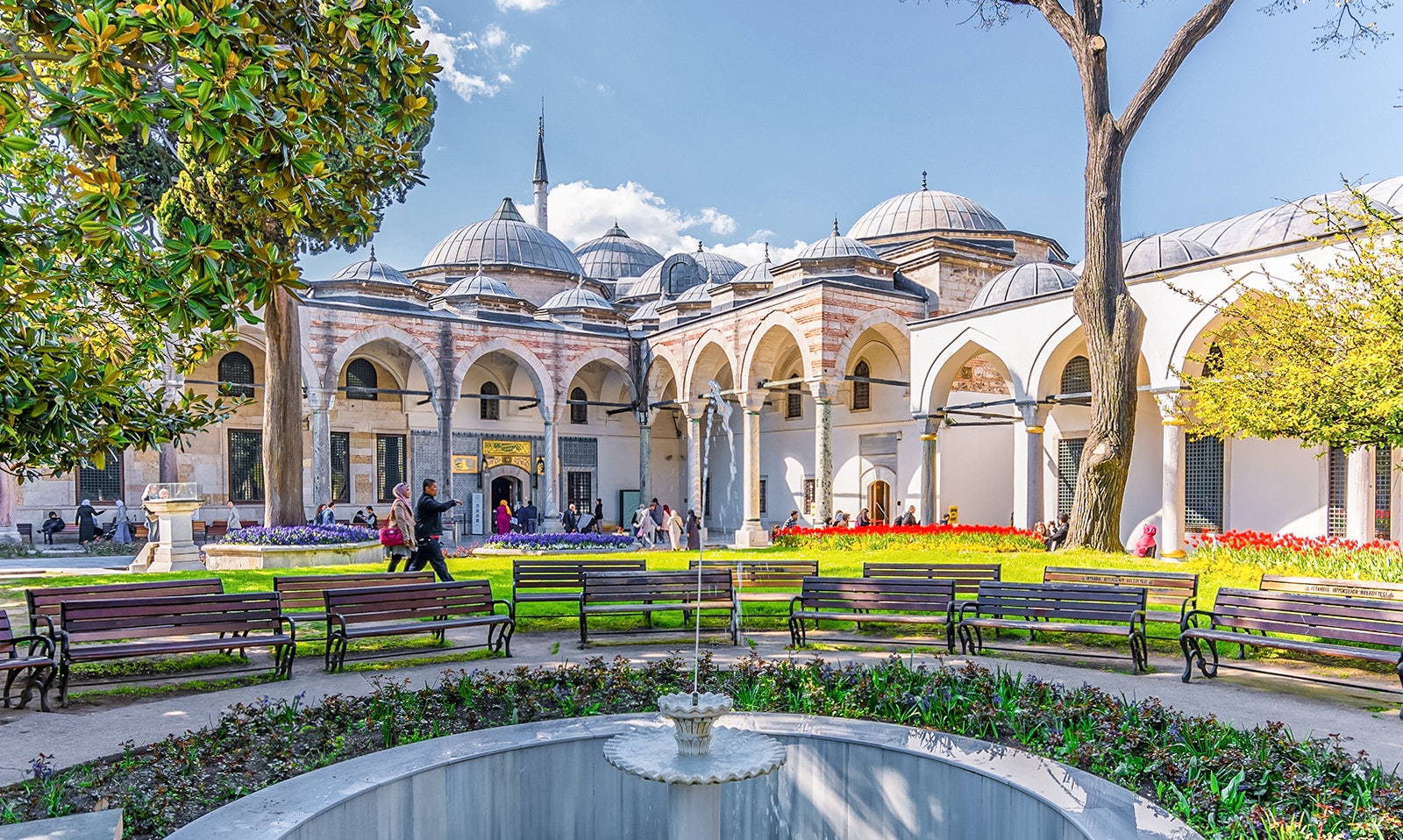
Timeline of events
- 1459 – Construction begins under Mehmed II.
- 1478 – Palace completed.
- 1530s – Harem relocated here.
- 1574 – Fire during Selim II's reign; reconstruction.
- 1856 – Court moves to Dolmabahçe Palace.
- 1924 – Converted into a museum.
Recommended tickets to Topkapi Palace
The History of Topkapı Palace
From conquest to palace: The birth of Topkapı
After conquering Constantinople in 1453, Sultan Mehmed II (aptly nicknamed "the Conqueror") needed a headquarters befitting his new empire. He chose a spectacular location atop the ancient Byzantine acropolis, with views of the Golden Horn, the Bosphorus, and the Sea of Marmara. Construction began in 1459, and by 1478, the sultan had his new home.
Unlike European palaces built as single massive structures, Topkapı was designed as a series of pavilions, courts, and buildings arranged around four main courtyards—creating a city within a city. This layout perfectly embodied Ottoman principles of privacy, hierarchy, and order, with each courtyard increasing in exclusivity the deeper you ventured.
Drama behind the walls
If these walls could talk, they'd tell tales of court intrigue, power struggles, and political maneuvering. The palace witnessed the height of Ottoman power and the beginning of its slow decline. It saw celebrations of military victories, lavish circumcision festivals for princes, and the tension of succession disputes.
During the "Sultanate of Women" period in the 16th and 17th centuries, powerful queen mothers and wives wielded tremendous influence from within the Harem, sometimes effectively ruling the empire from behind the scenes. By the mid-19th century, as the Ottoman Empire struggled to modernize, Sultan Abdülmecid decided to move to the more European-styled Dolmabahçe Palace in 1856, marking the end of Topkapı's era as the empire's center.
The Harem: Beyond the Myths
Forget what you've seen in movies—the real Harem was much more complex! This secluded "palace within a palace" was home to the sultan's mother (the powerful Valide Sultan), his wives, concubines, children, and their female servants.
When you visit the Harem today (which requires a separate ticket), you'll walk through a maze of over 300 rooms, including stunning living quarters adorned with some of the most beautiful Iznik tiles and woodwork in the entire palace. The Harem wasn't just a residential space—it was an institution with strict hierarchy and protocol, where women received education in arts, literature, music, and politics. Many rose to positions of extraordinary influence, with the Queen Mother often wielding more power than anyone except the sultan himself.
Museum highlights: Topkapı's most extraordinary treasures
Since 1924, Topkapı has operated as a museum, allowing you to step back in time and experience Ottoman grandeur firsthand. Here are some must-see treasures that will transport you through centuries of history:
1The Imperial Treasury
Prepare to be dazzled by one of the most valuable collections in the world, including the 86-carat Spoonmaker's Diamond and the emerald-studded Topkapı Dagger (made famous in the film "Topkapi"). You'll also find golden thrones, jewel-encrusted objects, and precious gifts from rulers across Europe and Asia.
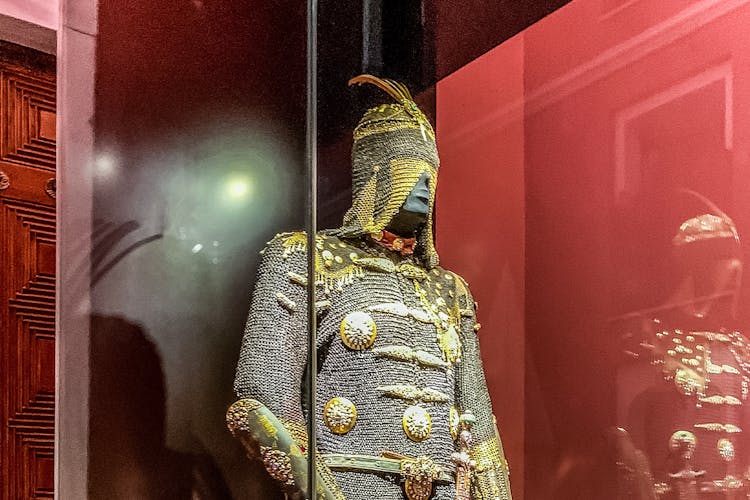
2Sacred Relics Collection
This unique collection houses items believed to be from the Prophet Muhammad and other important Islamic figures, including Muhammad's cloak, sword, bow, and a footprint preserved in clay. For Muslims, this is one of the most significant religious collections in the world.
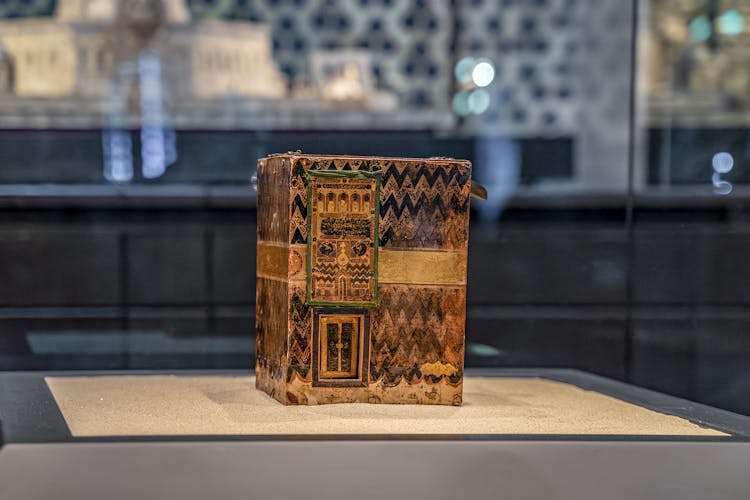
3The Kitchens
These massive facilities once prepared food for thousands of palace residents daily. Today, they house one of the world's finest collections of Chinese porcelain, brought to Istanbul via the Silk Road, alongside Ottoman silverware and crystal.
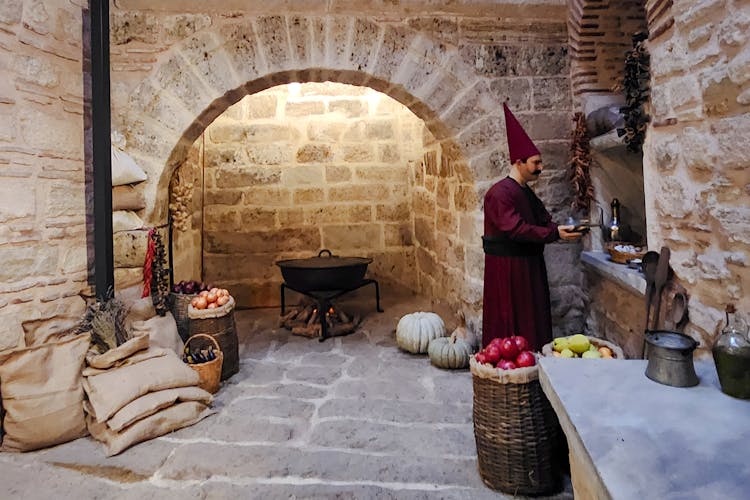
4Imperial Portrait Gallery
You’ll see portraits of sultans in this remarkable collection that spans generations of Ottoman rulers.
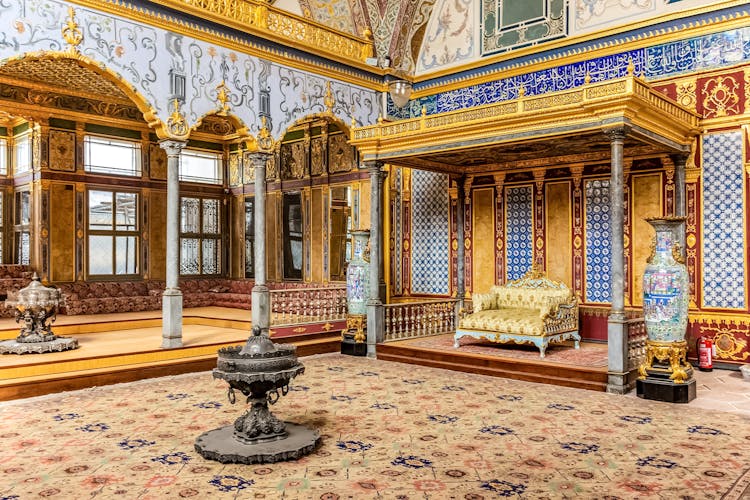
5The Weapons Collection
Marvel at intricately decorated swords, bows, shields, and firearms that showcase the Ottomans' craftsmanship and military might.
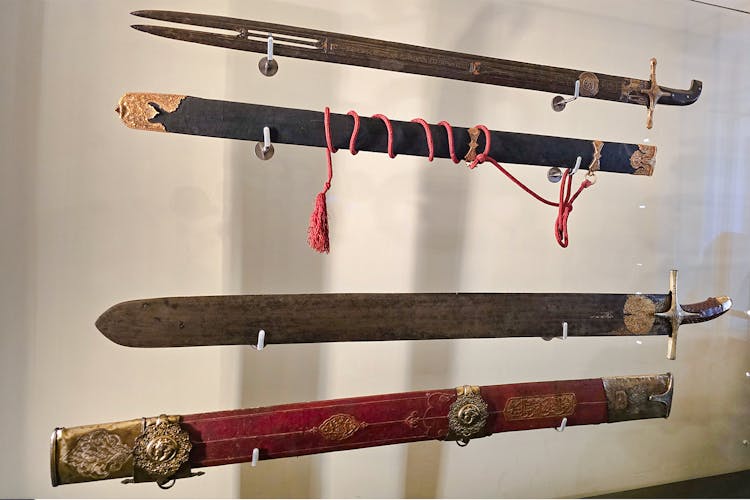
6The Baghdad Pavilion
This exquisite relaxation space for sultans features a marble fountain that once flowed with sherbet, surrounded by blue Iznik tiles and mother-of-pearl inlaid furniture.
